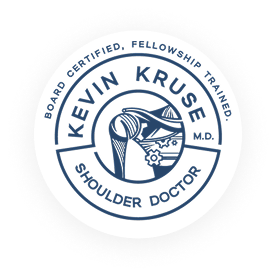Selecting the right Fort Worth rotator cuff surgeon is critical to a successful outcome to your surgery. Dr Kruse is conveniently located in Dallas and has helped thousands of patients from all of Texas regain their shoulder mobility. The rotator cuff consists of four muscles and their tendons that stabilize the shoulder joint. They are located in our upper arm and surround the outer edge of your shoulder blade. The rotator cuff’s tendons and muscles help lift and rotate the arm. They also help to keep the head of the upper arm bone (humerus) centered in the shoulder joint. When these muscles and tendons are damaged or torn, it is called a rotator cuff injury. Rotator cuff tears are common in people who play sports involving throwing and those who participate in repetitive overhead motions for work or home activities.
1. Causes of Rotator Cuff Tears
Rotator cuff tear injuries are the most common shoulder injuries. They most often occur because of wear and tear. Over time, the rotator cuff muscles and tendons may become thickened, inflamed, or overstretched. As they get older, many people’s rotator cuffs gradually lose some of their strength and elasticity. Muscle tone in a person’s upper arm also tends to decrease with age, and shoulder joint injuries are more common. All of these factors can lead to a gradual decline in the function of the rotator cuff muscles and tendons.
A direct blow to the top of the shoulder bone can injure a tendon or muscle, often leading to a tear. A fall on the shoulder or the shoulder blade can also cause damage or partial tears of the rotator cuff muscles. Repeated lifting, carrying, and reaching from above may also stress the shoulder blade and rotator cuff tendons.
2. Symptoms of Rotator Cuff Tear
A rotator cuff tear can come on gradually or suddenly. When rotator cuff tendons and muscles are stretched, they may cause pain. This pain is usually felt toward the back of the shoulder and upper arm. In some cases, you may experience a feeling of weakness in your shoulder or find it difficult to lift your arm above shoulder level. A complete rotator cuff tear can cause a painful snapping or popping feeling during movement in the shoulder joint. This condition may first appear as a pain in the shoulder bone that gets worse when lifting, reaching overhead, pushing, or pulling. You may also notice weakness in the shoulder and arm bone. If you have ever felt this pain, it is essential to seek medical help immediately.
3. Rotator Cuff Tear Diagnosed
A thorough medical history, physical examination, and diagnostic tests are needed to have a rotator cuff tear diagnosed. These tests may include X-rays, an MRI scan, or an ultrasound. You may be asked to do several tests to evaluate shoulder conditions before the diagnosis is confirmed. When you come for treatment, the doctor will decide whether or not surgery is needed. The doctor will look for signs of damage and poor movement in your shoulder and other shoulder injuries that could contribute to your condition. Dr. Kevin Kuger is a Fort Worth, Texas rotator cuff repair surgeon based in Texas and specializes in shoulder joint complications.
4. Treatment by a Forth Worth Rotator Cuff Surgeon
Treatment options for a rotator cuff tear depend on the type and severity of your injury. In some cases, strengthening exercises and staying active may help to improve symptoms. Surgery may be needed if you have a tear in the tendon or experience pain at rest or after using your arm. Your doctor will discuss several treatment options to help relieve your pain, return your shoulder to its normal function and allow you to return to work and everyday activities. Most rotator cuff tear surgeries are done using arthroscopic surgery to repair the damage in the shoulder. However, other methods can be used to fix the problem. For example, there may be rare occasions when doctors perform large incisions to repair a tear. Consulting shoulder specialists is important; Dr. Kruger is a Fort Worth rotator cuff repair specialist who can help fix all your rotator cuff treatments.
5. Rotator Cuff Tear Surgery
Surgery for a rotator cuff tear usually involves repairing or removing damaged tendons and other tissues. It may be necessary if you have a tear in the tendon or experience pain at rest or after using your arm. Surgical treatments for rotator cuff tears most commonly involve one of the following: removing the torn rotator cuff tissue and replacing it with a tendon graft, suturing together torn tissue, reinforcing or repairing the cuff with an artificial device, and removing the torn tissue and repairing the tear using a patch of tiny skin grafts. Rotator cuff tears are repaired primarily by arthroscopic surgery. Dr. Kevin Kuger is a Fort Worth rotator cuff specialist with years of experience in shoulder surgery.
6. Recovery from Rotator Cuff Tear Surgery
Recovery from rotator cuff tear surgery usually takes six to eight weeks. Most people will begin to feel better after day two post-surgery, but full recovery may take more than a month. You will have to follow your doctor’s post-operative instructions carefully. Physical therapy may be needed to help with shoulder movement and strengthening. Your doctor may prescribe pain medicines during this time if required.
Rotator cuff muscles and tendons are essential to enjoy your life without pain. People who lift and carry heavy objects regularly need healthy rotator cuffs. If you are doing all these activities, you should do shoulder stretches daily to avoid any injuries in the future. Always consult your doctor before doing any new workout or different exercises so he can help you understand how to do it correctly.
Contact Dr Kruse today, an expert Fort Worth rotator cuff surgeon and specialist to schedule your appointment.

